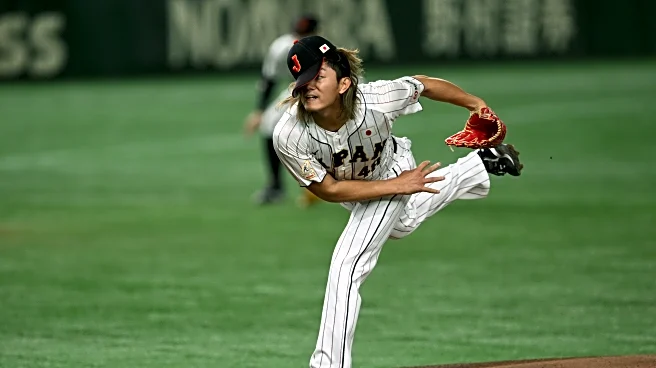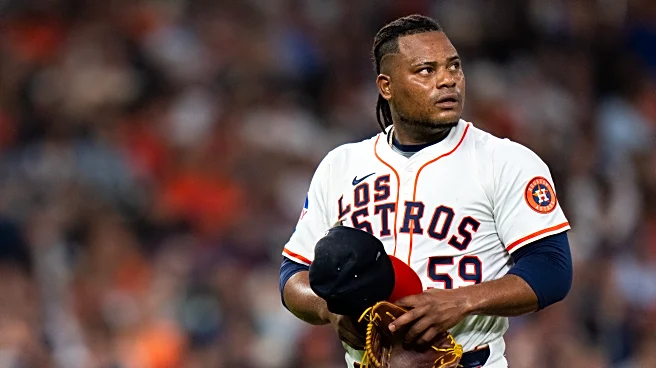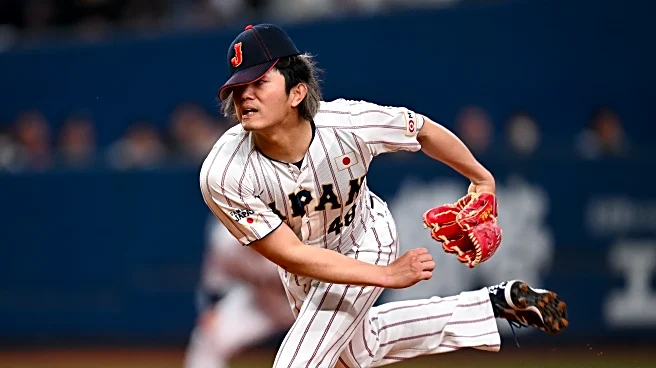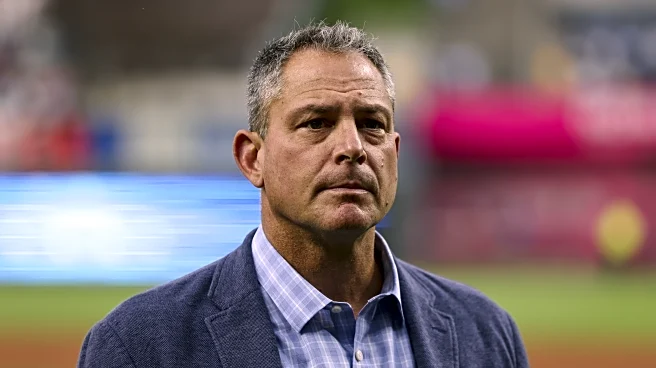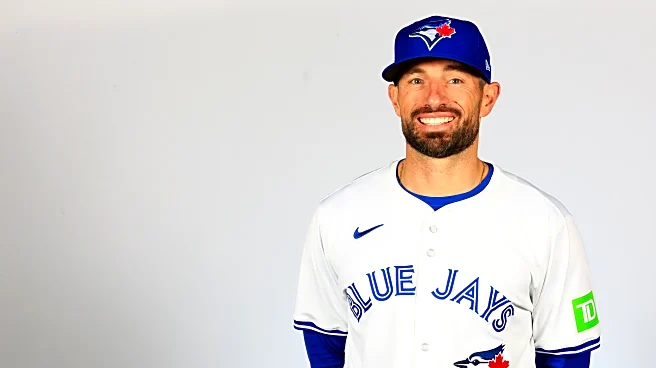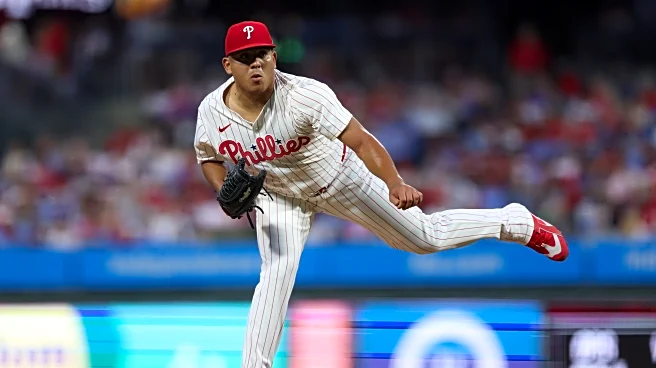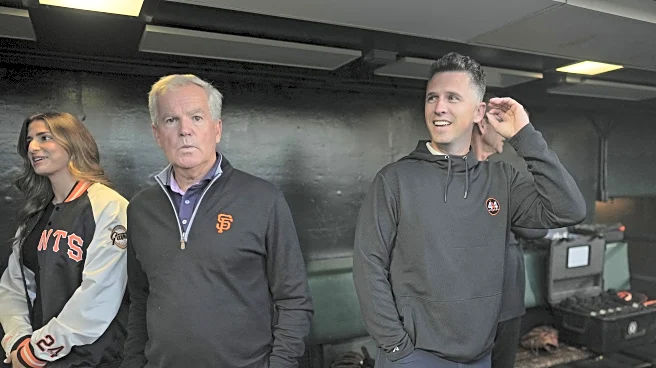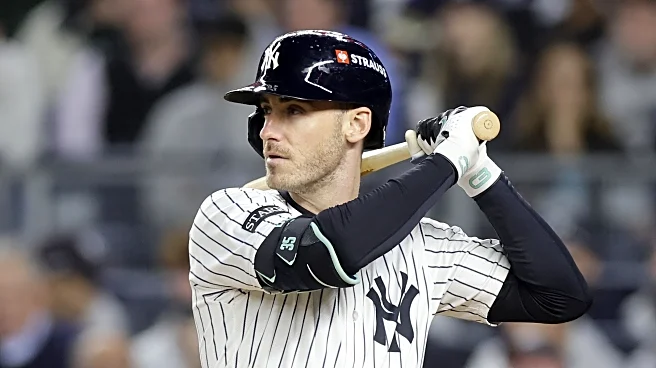It’s that time again: free agency. Where you dream about what the San Francisco Giants might do, and then they almost surely do something else entirely.
For a few years now I’ve had an annual article that
I write at the beginning of free agency, and you’ve stumbled across this year’s iteration. The goal is to get an idea for how much certain players will cost, so we can form more informed ideas of which players the Giants should (or, just as critically, should not) sign.
As usual, I’m using contract projections from four tremendous sources: Ben Clemens at Fangraphs, Kiley McDaniel at ESPN, Tim Britton at The Athletic, and the quartet of Steve Adams, Anthony Franco, Darragh McDonald, and Tim Dierkes at MLB Trade Rumors. All four publications have released their list of the top 50 free agents this offseason, and most of these players are listed on all four.
I’ve sorted the players into tiers, which are based on how much of a priority they should be for the Giants … or in the case of the first tier, how big of an impact they would be. Within the tiers, players are not listed in any special order other than general industry consensus. Each player’s projected contracts are listed in order of most total money to least, and the number in parenthesis next to each name is the age that they’ll be next season.
Now enjoy. And get to dreaming. Or fretting. Your call.
Tier 1: Dream on (don’t mind if I do…)
OF Kyle Tucker (29)
The Athletic: 12 years, $460 million ($38.3M AAV)
ESPN: 11 years, $418 million ($38M AAV)
MLBTR: 11 years, $400 million ($36.4M AAV)
Fangraphs: 10 years, $370 million ($37M AAV)
Tucker’s free agency is hard to predict, in part because he occupies a unique level of star. He’s unequivocally one of the best players in baseball, but not in that tier of seminal talents who have defined the market the last two summers (Juan Soto and Shohei Ohtani). All things considered, he probably comps the best to Vladimir Guerrero Jr., who got 14 years and $500 million earlier this year, just a little bit older … he’s not as healthy and probably not as good, but hitting free agency rather than signing an extension negates some of that.
One thing that Tucker has going for him is that he’s the undebatable star of the winter. There’s no ace on the market akin to Corbin Burnes or Yoshinobu Yamamoto of winters past, and the lone bat in the same stratosphere as Tucker (Kyle Schwarber) is a 33-year old who should be kept away from playing defense at any and all costs. If a team needs a needle-moving player this offseason, Tucker is the player to focus on. Because of that, people will try to tell you — again — that the Giants are in the running for Tucker. It’s strangely difficult to find articles about Tucker that don’t link him to the Giants in some capacity.
Unfortunately, I’m here to tell you to block out the noise. There is no reason to believe the Giants are preparing to make any sort of run at Tucker. These numbers are mostly here so you can form an opinion on whether or not they should.
Tier 2: Nine-figure pitchers are probably too rich, but perhaps here’s an exception
RHP Tatsuya Imai (28)
The Athletic: 8 years, $190 million ($23.8M AAV)
MLBTR: 6 years, $150 million ($25M AAV)
ESPN: 6 years, $135 million ($22.5M AAV)
Fangraphs: 5 years, $100 million ($20M AAV)
Refresh my memory: have the Giants ever done well with an undersized pitcher with long hair? And have they ever looked smart for aggressively pursuing a pitcher coming over from Japan?
No, Imai is neither Tim Lincecum nor Yamamoto, but he just might be really good. It really just depends on who you ask. He’s No. 5 on ESPN’s list, but No. 20 on Fangraphs’. And his contract is exceptionally difficult to project, as no one has been able to accurately predict the future with contracts for Pacific Rim players.
We know that pitching is the top priority for the Giants this offseason, and if they want to make a splash, Imai is, in my opinion, the clear place to do it. He’s young enough that a longer-term contract is a fairly easy pill to swallow, and he comes with some serious upside. Perhaps just as importantly, he would give the Giants a foot in the door in the Japanese market, which should prove very profitable, while also making it easier to attract future free agents.
Imai would come with a fairly sizable posting fee, but, as a reminder, that doesn’t count towards the salary cap.
Tier 3: Nine-figure pitchers are probably too rich…
LHP Framber Valdez (32)
The Athletic: 7 years, $196 million ($28M AAV)
ESPN: 6 years, $168 million ($28M AAV)
Fangraphs: 5 years, $150 million ($30M AAV)
MLBTR: 5 years, $150 million ($30M AAV)
RHP Dylan Cease
MLBTR: 7 years, $189 million ($27M AAV)
The Athletic: 6 years, $174 million ($29M AAV)
Fangraphs: 5 years, $155 million ($31M AAV)
ESPN: 5 years, $145 million ($29M AAV)
LHP Ranger Suárez (30)
The Athletic: 6 years, $153 million ($25.5M AAV)
Fangraphs: 5 years, $130 million ($26M AAV)
MLBTR: 5 years, $115 million ($23M AAV)
ESPN: 4 years, $92 million ($23M AAV)
The Giants need a lot of help when it comes to starting pitching. Logan Webb and hoping that Robbie Ray and Landen Roupp can survive a full season does not a quality rotation make. They need to sign some impact pitchers, and it’s hard to do that without dipping into the well of arms slated to make nine figures.
Greg Johnson also said, explicitly, that paying nine figures for a pitcher is not something the Giants feel particularly comfortable doing, and I’m inclined to, unfortunately, believe him. Owners lie to fans all the time, but usually it’s when they’re trying to hide their frugality, not explain it.
Still, there’s a chance that Buster Posey can talk some since into the rest of the ownership group, and the team can emerge with one of these arms, and it’s certainly a debate as to which of the three is most desirable. All three have the Qualifying Offer attached to them.
Tier 4: Slightly boring, but sensible starting pitchers
RHP Michael King (31)
MLB TR: 4 years, $80 million ($20M AAV)
The Athletic: 3 years, $75 million ($25M AAV)
ESPN: 3 years, $57 million ($19M AAV)
Fangraphs: 1 year, $22 million ($22M AAV)
LHP Shōta Imanaga (32)
MLBTR: 3 years, $45 million ($15M AAV)
ESPN: 3 years, $43.5 million ($14.5M AAV)
Fangraphs: 2 years, $40 million ($20M AAV)
The Athletic: 1 year, $22 million ($22M AAV)
RHP Brandon Woodruff (33)
MLBTR: 3 years, $66 million ($22M AAV)
The Athletic: 2 years, $40 million ($20M AAV)
Fangraphs: 2 years, $34 million ($17M AAV)
ESPN: 2 years, $25 million ($12.5M AAV)
RHP Merrill Kelly (37)
The Athletic: 2 years, $46 million ($23M AAV)
MLBTR: 2 years, $36 million ($18M AAV)
ESPN: 2 years, $35 million ($17.5M AAV)
Fangraphs: 1 year, $21 million ($21M AAV)
RHP Zac Gallen (30)
MLBTR: 4 years, $80 million ($20M AAV)
ESPN: 4 years, $76 million ($19M AAV)
The Athletic: 2 years, $42 million ($21M AAV)
Fangraphs: 2 years, $36 million ($18M AAV)
RHP Lucas Giolito (31)
The Athletic: 3 years, $57 million ($19M AAV)
MLBTR: 2 years, $32 million ($16M AAV)
ESPN: 2 years, $32 million ($16M AAV)
Fangraphs: 2 years, $28 million ($14M AAV)
RHP Chris Bassitt (37)
The Athletic: 2 years, $46 million ($23M AAV)
MLBTR: 2 years, $38 million ($19M AAV)
ESPN: 2 years, $34 million ($17M AAV)
Fangraphs: 1 year, $17 million ($17M AAV)
I had to stop somewhere, but you can add other names here, as surely the Giants scope of competent but unexciting starting pitchers spans a wide range of names. Dustin May is out there. Zack Littell is out there. Many others are out there. This crop is just slightly better, and likely due for a little bit more money. Four of them — Gallen, King, Imanaga, and Woodruff — received the Qualifying Offer.
There’s always a lot of names in this bucket, and the results are always all over the place. Last year, in a tier I titled “Non-ace starting pitchers,” I listed nine names: Jack Flaherty (2.5 fWAR this year), Shane Bieber (0.3), Sean Manaea (0.4), Yusei Kikuchi (2.5), Nathan Eovaldi (3.7), Nick Pivetta (3.7), Nick Martinez (2.1), Luis Severino (2.5), and Walker Buehler (-0.3).
Most of those performances would be delightful for most of the above contract predictions and really, this is probably the sweet spot for the Giants. All of these pitchers have enough upside to start a playoff game and potentially be a No. 3 on a high-end rotation, and none of them are going to put the organization in a fiscal pickle if they underperform.
That said, this is a grouping where context is highly dependent. The Giants need at least two starting pitchers this offseason, and if they sign one of these Tier 4 arms to accompany a selection from Tier 2 or Tier 3, we’ll all be feeling absolutely dandy about their rotation heading into 2026. But if they sign a Tier 4 arm as their big fish next to someone in Tier 5, well … that’s not really gonna cut it.
Tier 5: AARP (Association for the Advancement of [nearly] Retired Pitchers)
RHP Justin Verlander (43)
MLBTR: 1 year, $22 million ($22M AAV)
ESPN: 1 year, $13 million ($13M AAV)
Fangraphs: 1 year, $10 million ($10M AAV)
RHP Max Scherzer (41)
MLBTR: 1 year, $15 million ($15M AAV)
The Athletic: 1 year, $14 million ($14M AAV)
We’re, at some level, scraping the bottom of the barrel at this point, as evidenced by the fact that Verlander only made the list of top-50 free agents at three of the four sites, and Scherzer only at two. Still, either of these guys could provide immense value … just, as with Tier 4, as long as they’re paired with one of the better free agent (or trade) pitchers. Verlander and Imai? Great offseason. Scherzer and Bassitt? Not so much.
Scherzer has received a lot of to-the-Giants hype due to his close relationship with new manager Tony Vitello, who was his collegiate teammate. I kind of assume the Giants would be more interested in Verlander, though. They’ve already had him in-house and seen how great of a teammate he was (any area where Scherzer’s reputation has not always been stellar) and, more importantly, Verlander was just significantly better than Scherzer a year ago. But of course, other teams saw that as well, and Verlander seems likely to have suitors who offer more enticing situations than the Giants can; Scherzer may not be sitting in that same situation.
Tier 6: Oh yeah, relievers
RHP Edwin Díaz (32)
The Athletic: 4 years, $84 million ($21M AAV)
MLBTR: 4 years, $82 million ($20.5M AAV)
Fangraphs: 3 years, $75 million ($25M AAV)
ESPN: 4 years, $60 million ($15M AAV)
RHP Devin Williams (31)
MLBTR: 4 years, $68 million ($17M AAV)
ESPN: 3 years, $45 million ($15M AAV)
Fangraphs: 2 years, $24 million ($12M AAV)
The Athletic: 1 year, $18 million ($18M AAV)
RHP Tyler Rogers (35)
ESPN: 3 years, $27 million ($9M AAV)
Fangraphs: 2 years, $22 million ($11M AAV)
MLBTR: 2 years, $18 million ($9M AAV)
The Giants need bullpen help. Oh buddy, do they ever need bullpen help. Ryan Walker is the only player who ended the season in the Giants bullpen whom you can confidently expect to be in that group when Opening Day rolls around, and that sound you just heard was a KNBR caller throwing their phone at the wall after reading that sentence.
With that said, I am of the strong belief that the Giants should not play around at the top of the free agency relief pile. Many will point to the Giants previous failures with high-priced closers, but I think there’s a much more pertinent and fresh example: the 2025 Los Angeles Dodgers, who last offseason splurged on Tanner Scott and then sent everyone a middle finger by adding Kirby Yates, all while spending big to keep Blake Treinen, only to find themselves in the World Series patching together a bullpen out of a starter on zero days of rest, a late-30s starter with an awful postseason resume, and an unheralded rookie with 22.2 innings of MLB experience when the playoffs began.
High-dollar relievers are fickle things, and there are only two types of teams that should pursue them: teams that are already strong championship contenders with a deep roster who can afford to invest for an advantage in the margins (as the Dodgers did with Scott); and teams with so much money to spend that they can afford to dole out one of the richest relief contracts in MLB history to a closer and then flatly refuse to use him in the postseason (as the Dodgers did with Scott).
The Giants should try to emulate the Dodgers, but the “Sign Tanner Scott” part of that impression is the final act, and there’s a whole lot to get to before then.
Instead, the Giants should — and likely will — try to patch the bullpen the good old fashioned way, which is usually just as effective: with Minor League free agents, internal options, and starting pitcher depth moved to a more usable role. But I wouldn’t be surprised if they make one mid-level relief signing, which is why I included Rogers in with the more pricy top-of-the-market duo. There are plenty of other pitchers you can fit in that bucket with Rogers, such as Kenley Jansen, Seranthony Domínguez, Brad Keller, Raisel Iglesias, and so many more. I only included Rogers because he’s the one who so clearly makes the most sense: he’s one of the most consistent relievers in modern MLB history, he can pitch every other day for a full season, he induces groundballs for the Giants’ strong defensive infield, and we know he and the Giants love each other.
Bring him home.
Tier 7: The outfield could use some help
Trent Grisham (29)
ESPN: 4 years, $90 million ($22.5M AAV)
MLBTR: 4 years, $66 million ($16.5M AAV)
Fangraphs: 3 years, $54 million ($18M AAV)
The Athletic: 3 years, $54 million ($18M AAV)
Harrison Bader (32)
The Athletic: 2 years, $32 million ($16M AAV)
Fangraphs: 2 years, $30 million ($15M AAV)
MLBTR: 2 years, $26 million ($18M AAV)
ESPN: 2 years, $25 million ($17.5M AAV)
Cedric Mullins (31)
The Athletic: 1 year, $11 million ($11M AAV)
Mike Yastrzemski (35)
The Athletic: 1 year, $11 million ($11M AAV)
Congrats to The Athletic for cashing that lobbyist check from the Fourth Outfielders Public Affairs Committee. The Giants are in a bit of a pickle with the outfield. It pretty clearly needs help, but they also like Drew Gilbert — and possibly Luis Matos and Jerar Encarnación — enough that it’s hard to imagine them shelling out what it will cost to get Grisham (who also has the Qualifying Offer attached to him). A player like Bader is a sensible addition, but Bader is the only player in the “Player Like Bader” category, and even so, $15-18 million a year is a lot of money to send on a three-and-a-halfth outfielder when you need to use a limited budget to sign dozens of pitchers.
The Giants could easily skirt this issue by signing Tucker or Cody Bellinger, but they won’t. I really don’t know what they’ll do, but, uhh … here are some names, I guess.
Tier 8: The infield could use some help
Bo Bichette (28)
The Athletic: 8 years, $212 million ($26.5M AAV)
MLBTR: 8 years, $208 million ($26M AAV)
Fangraphs: 7 years, $203 million ($29M AAV)
ESPN: 5 years, $130 million ($26M AAV)
Gleyber Torres (29)
ESPN: 3 years, $57 million ($19M AAV)
Fangraphs: 3 years, $54 million ($18M AAV)
The Athletic: 3 years, $48 million ($16M AAV)
MLBTR: 1 year, $22 million ($22M AAV)
Ha-Seong Kim (30)
The Athletic: 3 years, $50 million ($16.7M AAV)
MLBTR: 2 years, $30 million ($15M AAV)
Fangraphs: 2 years, $26 million ($13M AAV)
ESPN: 1 year, $16 million ($16M AAV)
I certainly don’t expect the Giants to pursue Bichette, though he feels like the most plausible of the “nah, they wouldn’t do that, sadly” free agents in recent memory. And committing three-quarters of a million to build a super infield does sound like a fun idea.
In all, I don’t really expect the Giants to spend all that much time in the infield market. Would they like an upgrade? Certainly. Is it as big of a priority as a starting pitcher, a second starting pitcher, a third starting pitcher, half a dozen relievers, or an outfielder? No, probably not. I think the most likely way that the Giants end up going after Torres or Kim (or one of the lesser infielders, like Willi Castro or the defensively-challenged Jorge Polanco) is if they include Casey Schmitt in a trade.
In all likelihood, the Giants will sign a player that I haven’t mentioned. I didn’t have Justin Verlander listed when I did this exercise last year, and neither Jorge Soler nor Tom Murphy were present two offseasons ago. The Giants could really value someone that I didn’t talk about here, or they could address first base and/or backup catcher, or they could create a new hole on the roster that needs patching by trading someone away. And they probably will only sign one or maybe two of the names that I did list.
But hey. At least you now know what dreams cost.
